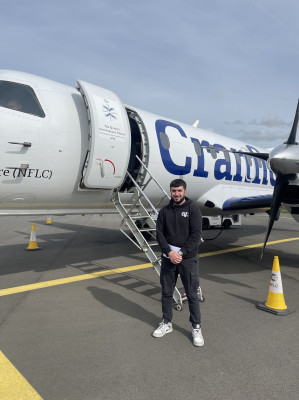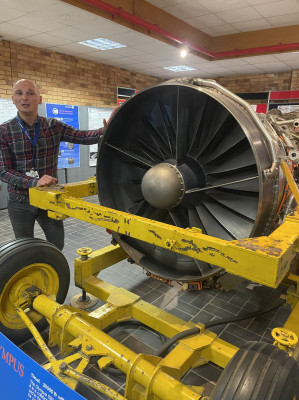News
Aerospace Engineering students take part in a Flight Test
3 May 2024


Third year Aerospace Engineering students got to put what they’ve learnt in their Flight Dynamics module into practice when they visited the national flying laboratory centre at Cranfield University last month. Queen Mary is an academic partner of the centre and every year (even during Covid restrictions) all third year Aerospace Engineering students have been offered this exciting opportunity.
Led by Dr Simon Place of the centre, the students experienced a flight on a Saab 340b+ plane where they recorded measurements on Lift and Draft, Aircraft Performance, Longitudinal and Lateral Dynamics Stability and more – later processing the data using techniques they have learnt at Queen Mary and the flight centre.
The students also met Dr Christos Mourouzidis in the Centre for Propulsion and Thermal Power Engineering, who showed them different types of engines and operations.
“It was a hands-on experience demonstrating how the performance and handling qualities of a real aircraft are measured,” said student Umut Kusne. “This unforgettable experience was not only intellectually stimulating but also deeply informative.”
Dr Avital the flight dynamics module organiser commented “I was happy to see so many students joining this course and their happy faces after flying. It is very important for aerospace students to closely see aircraft and understand how they operate. This is the reason for taking our first year aerospace students to the RAF Museum and our third year aerospace students to this important course”.
Dr Chiados, the teaching associate who led the flight course organisation from the Queen Mary side added “The students co-operated wonderfully and clearly benefited from this course. It was a unique and important learning experience, and it was really rewarding to see the students’ reactions after the course”.

